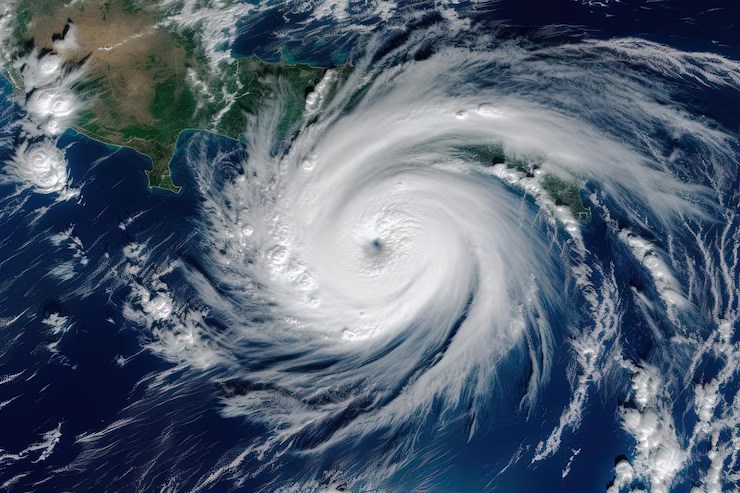Introduction to Hurricanes
Hurricanes are among the most powerful and devastating natural phenomena on Earth. These massive storms, also known as cyclones or typhoons depending on their location, are characterized by strong winds, heavy rainfall, and storm surges. In this article, we will delve into the intricacies of hurricanes, their formation, impact, and the measures taken to mitigate their effects.
What is a Hurricane?
A hurricane is a tropical cyclone characterized by strong rotating winds with speeds exceeding 74 miles per hour (119 kilometers per hour). These storms typically originate over warm ocean waters near the equator and can span hundreds of miles in diameter.
How are Hurricanes Formed?
Hurricanes form over warm ocean waters when atmospheric conditions are conducive to the development of thunderstorms. As warm, moist air rises from the surface, it cools and condenses, releasing latent heat and energy, fueling the storm’s growth and intensification.
The Anatomy of a Hu
The eyewall is the region immediately surrounding the eye of the hurricane and is where the strongest winds and heaviest precipitation are concentrated. It is often the most destructive part of the storm.
Rainbands
Rainbands are bands of clouds and thunderstorms that spiral outward from the center of the hurricane. These bands can produce torrential rainfall and contribute to flooding over a wide area.
Storm Surge
One of the most significant hazards associated with hurricanes is storm surge, which is the abnormal rise in seawater level caused by the storm’s winds and low atmospheric pressure. Storm surges can inundate coastal areas, causing widespread flooding and destruction.
Categories of Hurricanes
Hurricanes are classified into different categories based on their wind speeds and potential damage according to the Saffir-Simpson Hurricane Wind Scale.
The Impact of Hurricanes
Destruction Caused by High Winds
The strong winds associated with hurricanes can cause extensive damage to buildings, infrastructure, and vegetation, leading to power outages, property destruction, and loss of life.
Flooding and Storm Surges
Heavy rainfall from hurricanes can result in flash floods and river flooding, while storm surges can inundate coastal areas, causing widespread destruction and posing significant risks to life and property.
Economic Impact
The economic toll of hurricanes can be staggering, with billions of dollars in damage to homes, businesses, and infrastructure, as well as long-term impacts on local economies and industries.
Hurricane Preparedness
Evacuation Plans
In the face of an approaching hurricane, it is crucial for residents in vulnerable areas to have evacuation plans in place and to heed warnings from local authorities to evacuate to safer locations.
Stocking Up on Essentials
Preparing an emergency supply kit with essential items such as food, water, medications, and first aid supplies is essential for weathering the storm and its aftermath.
Securing Property
Securing windows, doors, and outdoor furniture, as well as trimming trees and securing loose objects. Can help minimize damage to property during a hurricane.
Climate Change and Hurricanes
Influence of Climate Change on Hurricane Intensity
There is growing evidence that climate change is influencing the intensity and frequency of hurricanes, with warmer ocean temperatures providing more energy for storm development and stronger winds.
Rising Sea Levels and Increased Storm Surges
Rising sea levels due to climate change are exacerbating the impacts of storm surges, leading to higher inundation levels and more extensive coastal flooding during hurricanes.
Historical Hurricanes
Notable Hurricanes in History
Throughout history, there have been numerous devastating hurricanes. That have left a lasting impact on communities and landscapes, serving as reminders of the destructive power of these storms.
Lessons Learned from Past Events
Studying past hurricane’s and their impacts can provide valuable insights into improving preparedness, response. And recovery efforts in the face of future storms.
Hurricane Recovery and Relief Efforts
Government Response
Governments at the local, state, and federal levels play a crucial role in coordinating disaster response efforts, providing emergency assistance. And facilitating long-term recovery and rebuilding efforts.
Non-profit Organizations Aiding in Recovery
Non-profit organizations and volunteer groups also play a vital role in providing immediate relief and long-term assistance to communities affected by hurricane’s, offering services. Such as shelter, food, medical care, and rebuilding support.
Conclusion
Hurricanes are natural disasters that pose significant risks to life, property, and the environment. By understanding the science behind hurricanes, implementing effective preparedness measures, and investing in resilient infrastructure and community planning. We can mitigate the impacts of these powerful storms and build more resilient communities.
ALSO READ:https://cafelam.com/
FAQs
How are hurricanes named?
Hurricanes are named according to predetermined lists established by the World Meteorological Organization.
Can hurricanes be predicted accurately?
While advancements in meteorological technology have improved hurricane forecasting, predicting the exact track and intensity of a storm remains challenging.
What is the difference between a hurricane and a typhoon?
The term “hurricane” is used in the Atlantic and northeastern Pacific, while “typhoon” is used in the northwestern Pacific.
Are hurricanes becoming more frequent due to climate change?
While there is evidence that climate change may influence hurricane intensity, the relationship between climate change and hurricane frequency is less clear.
How long do hurricanes typically last?
The lifespan of a hurricane can vary widely, from a few days to over a week, depending on environmental conditions and other factors.







